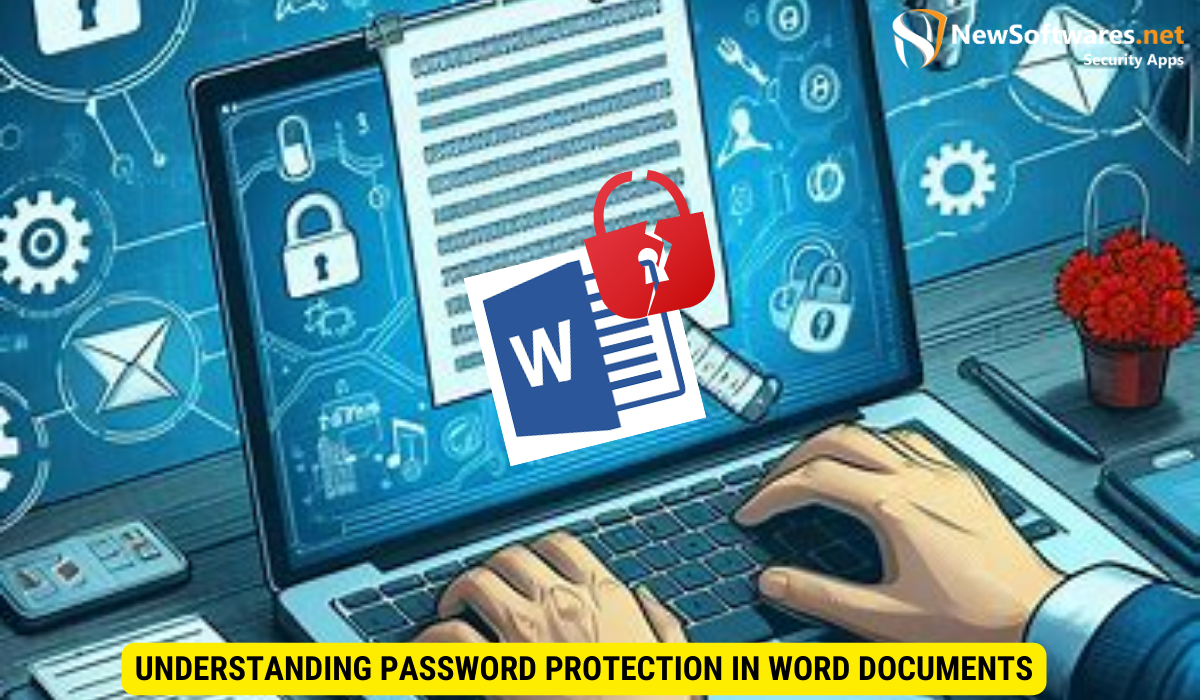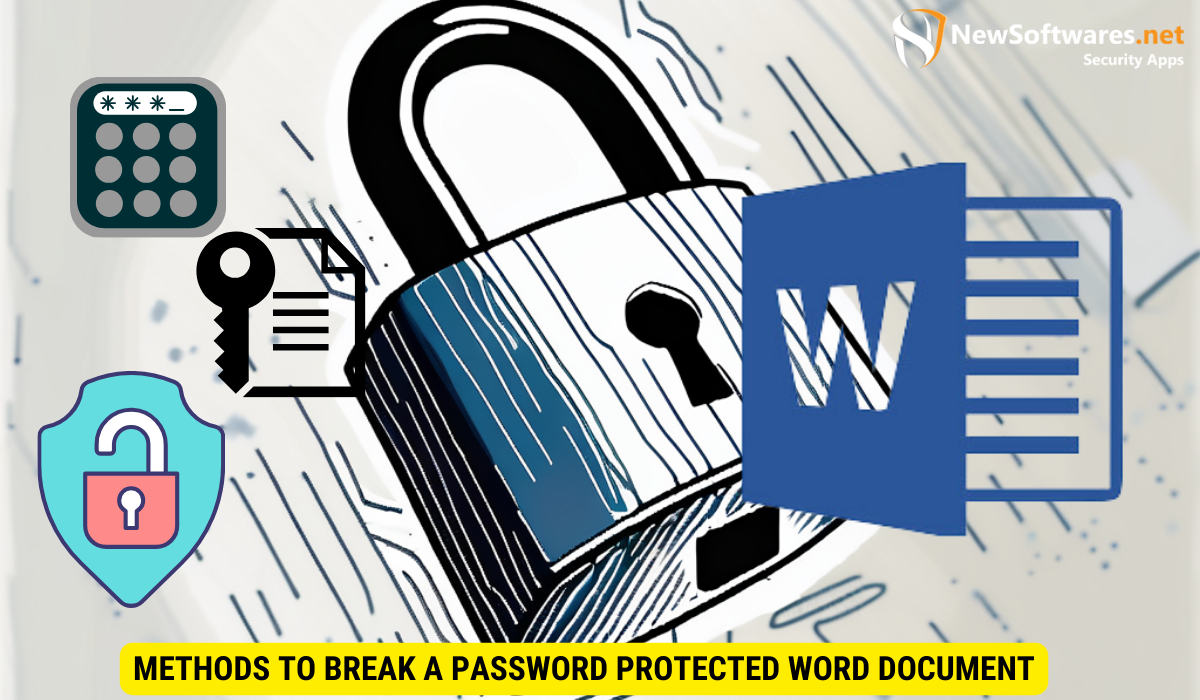If you find yourself unable to access a password-protected Word document, there are steps you can take to resolve the issue. Firstly, ensure you have permission to access the document legally and ethically. If you’re the owner and have forgotten the password, try using a reputable password recovery tool designed for Word documents. Alternatively, consider seeking assistance from professional services specializing in document recovery. Remember to prioritize privacy and confidentiality throughout the process.
Have you ever found yourself in a situation where you desperately need to access a password protected Word document, but you just can’t remember the password? It can be a frustrating experience, especially if the document contains important information that you need. But fear not, for there are ways to break through the barriers and gain access to your document. I will explore the different methods and tools you can use to break a password protected Word document, as well as discuss the legal and ethical considerations involved.
Understanding Password Protection in Word Documents

Before we dive into the methods of breaking a password protected Word document, it is important to understand the purpose of password protection and the different types available. Password protection is designed to prevent unauthorized access to your document, ensuring that only those who know the password can view or modify its content.
Implementing password protection on your Word documents is akin to placing a digital lock on a physical safe. It acts as a barrier, safeguarding your sensitive information from unauthorized users. This security measure is especially crucial in today’s digital age, where data privacy and confidentiality are paramount.
The Purpose of Password Protection
Password protection serves as a security measure, particularly when dealing with sensitive or confidential information. It allows you to control who can access your document, protecting it from prying eyes or accidental modifications.
Furthermore, password protection can also prevent unauthorized distribution of your document. By setting a password, you can ensure that only intended recipients with the correct credentials can view or edit the content, adding an extra layer of security to your data.
The Types of Password Protection in Word
Word documents offer two types of password protection: open password and modify password. An open password restricts access to the entire document, requiring the correct password to open it. On the other hand, a modify password only allows editing and formatting changes to the document, while still allowing read-only access without a password.
It’s important to choose the appropriate type of password protection based on your specific needs. Whether you want to completely restrict access to the document or only allow certain individuals to make changes, understanding the differences between open and modify passwords is essential in maintaining the security of your Word documents.
Legal and Ethical Considerations
It is important to note that breaking a password protected Word document without proper authorization may violate the law and infringe upon the privacy rights of others. Therefore, it is crucial to understand the legal and ethical implications before attempting to break a password.
When dealing with password-protected documents, it’s essential to recognize that the laws surrounding digital security and privacy are constantly evolving. As technology advances, lawmakers are faced with new challenges in balancing individual privacy rights with the need for security measures. Therefore, staying informed about the latest legal developments in this area is crucial to ensure compliance and ethical behavior.
When is it Legal to Break a Password?
In general, it is only legal to break a password protected Word document if you are the owner of the document or have explicit permission from the owner to access it. If you do not meet these criteria, it is recommended to seek alternative solutions or consult legal counsel.
Moreover, it’s important to consider the jurisdictional differences when it comes to password-breaking laws. What may be legal in one country could be a criminal offense in another. Understanding the legal landscape of the specific region where the document is located is essential to avoid inadvertently violating any laws.
Ethical Implications of Breaking Passwords
While legality is one concern, we must also consider the ethical implications of breaking passwords. It is essential to respect the privacy and confidentiality of others. Before attempting to break a password, ask yourself if the potential benefits outweigh the potential harm.
Additionally, ethical considerations extend beyond just the act of breaking a password. It is crucial to think about the broader implications of your actions. Consider the trust that may be broken, the relationships that could be damaged, and the potential legal consequences that could arise from unauthorized access. Upholding ethical standards in all aspects of digital security is paramount in maintaining trust and integrity in the digital world.
Preparatory Steps Before Breaking the Password
Now that we have discussed the importance of legal and ethical considerations, let’s move on to the preparatory steps you should take before attempting to break the password of a Word document.
Backing Up the Document
Before making any changes to the document, it is crucial to create a backup copy. This ensures that if anything goes wrong during the password-breaking process, you will still have the original document safe and intact.
Understanding the Risks Involved
Breaking password protection is not a risk-free process. Manipulating document files and using third-party tools can potentially lead to data corruption or file damage. It is crucial to be aware of the risks involved and proceed with caution.
Methods to Break a Password Protected Word Document

Now that you have taken the necessary precautions, let’s explore the various methods you can use to break a password protected Word document.
Using a Password Recovery Tool
Password recovery tools are designed to help you regain access to password protected documents. These tools use various techniques, such as brute-force attacks or dictionary attacks, to crack the password. However, keep in mind that the effectiveness of these tools depends on the complexity of the password.
Employing a Hex Editor
A hex editor allows you to view and edit the raw data of a document file. By manipulating the file structure, it is possible to remove or bypass password protection. However, this method requires a good understanding of file structure and is more advanced. Exercise caution when using a hex editor to avoid accidental corruption of the document.
Utilizing the ‘Save As’ Feature
In some cases, password protected Word documents can be opened as read-only without entering the password. By selecting the ‘Save As’ option and saving the document in a different file format, such as Rich Text Format (RTF) or plain text (TXT), you may be able to bypass the password protection. This method doesn’t work for all documents, but it is worth a try.
Troubleshooting Common Issues
While attempting to break the password of a Word document, you may encounter some common issues. Let’s explore these issues and provide troubleshooting tips.
Dealing with Corrupted Files
If the document becomes corrupted during the password-breaking process, you may be unable to open or recover it. To avoid this issue, always work on a backup copy of the document. Additionally, regularly save your progress to minimize the risk of data loss.
Overcoming Limitations of Certain Methods
Each method of breaking password protection comes with its own limitations. Brute-force attacks may take a long time to crack complex passwords, while employing a hex editor requires technical knowledge. If one method does not work, consider exploring alternative techniques or seeking professional assistance.
Key Takeaways
- Breaking the password of a Word document should only be done legally and ethically.
- Understanding the different types of password protection is important for choosing the right method to break it.
- Preparatory steps such as backing up the document and understanding the risks involved are crucial before attempting to break the password.
- Methods like using password recovery tools, employing a hex editor, or utilizing the ‘Save As’ feature can be used to break password protection.
- Always exercise caution, prioritize privacy, and consider alternative solutions before breaking passwords.
FAQs
-
Is it legal to break a password protected Word document?
- Breaking a password protected Word document can be illegal if you do not have the proper authorization. It is important to understand the legal implications and seek permission if necessary.
-
Are there any risks involved in breaking a password?
- Yes, there are risks involved in breaking password protection. These include potential data corruption or file damage. It is essential to proceed with caution and take necessary precautions.
-
Can all types of password protected Word documents be broken?
- No, not all types of password protection can be easily broken. The complexity of the password and the method used for protection play a significant role. Some documents may require more advanced techniques to break.
-
What should I do if my document becomes corrupted during the password-breaking process?
- If your document becomes corrupted, you may be unable to recover it. To avoid this issue, always work on a backup copy of the document and save your progress regularly.
-
Is breaking a password the only option to access a protected Word document?
- No, breaking the password should be considered as a last resort. Before attempting to break the password, explore alternatives such as seeking permission, recovering the password through legitimate methods, or seeking professional assistance.
Conclusion
In conclusion, breaking the password of a Word document should only be done under legally and ethically sound circumstances. It is crucial to understand the risks involved before attempting to break a password and to seek proper authorization if necessary. Remember to take preparatory steps such as backing up the document and proceed cautiously with the methods discussed. Always prioritize the privacy and confidentiality of others and consider alternative solutions before resorting to breaking passwords.
